ATV Brake Basics
Dec 10th 2018
ATV Brake Basics
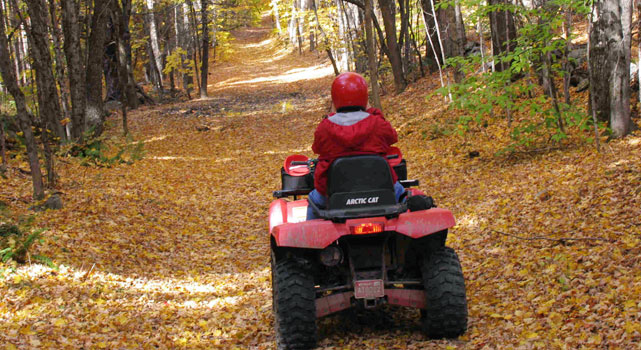
Regardless of whether you use your ATV or UTV for work or recreation, the braking system is a critical component to the overall performance of your machine. Most riders are surprised to learn that similar rules and guidelines apply for ATV brakes just as they would in brakes for cars and trucks. There is so much more to brakes than just slowing down and stopping; that’s why engineering firms and manufacturing companies spend millions of dollars each year in developing the latest technologies to improve braking performance and efficiency. But before we dig deep into the science behind high-performance ATV brakes, let’s first cover the basics so that you have a good understanding of what it is they actually do and how to maximize the life of your ATV brake parts. This will help give you a better idea as to what to consider when upgrading from stock or if you should decide to leave everything as-is with OEM parts.
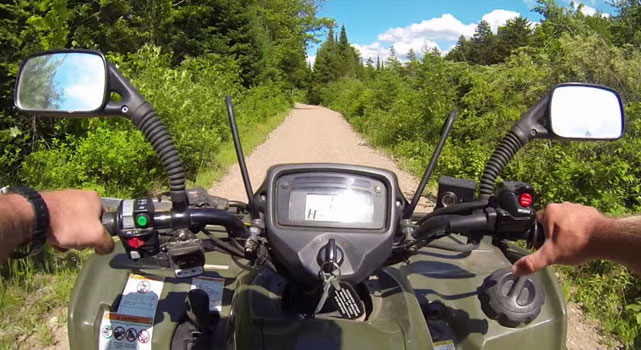
#1: BRAKES ARE IMPORTANT FOR VEHICLE CONTROL
It’s safe to say that brakes are a good thing to have in case of random obstacles or obstructions such as animals, large debris, sinkholes, steep inclines, boulders, trees, or the edge of a cliff should suddenly jump out in front of you while on the path. Brakes, however, serve another important function that can affect the drivability and handling performance of your ATV. Sticky or uneven brakes can negatively impact the handling and steering of your ATV, adding unnecessary difficulty to basic maneuvers such as turn-in. Some ATV models (such as those offered by BRP) come equipped with ABS, just like your regular commuter car or truck. While some experienced riders can overcome the limitations of non-assisted brakes, beginners and novices can benefit from the added safety of anti-lock brakes.
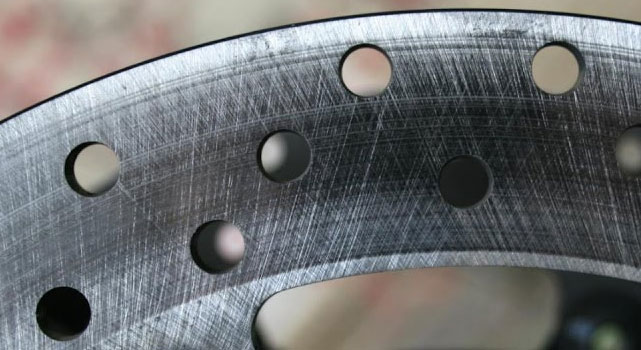
#2: NEW ATV BRAKES NEED TO BE BURNISHED
Whenever you change out your old or worn brake parts, there is a final process that needs to be done before you can use the brakes safely. This is called the burnishing or brake bed-in process. Just as it is with dedicated race cars and high-performance street cars, brake burnishing involves several moderate to high-pressure stops in order to build up a transfer layer of brake friction material on the rotors/drums. This transfer layer helps the brakes grab easier and more efficiently, as well as heat-tempers the mating surfaces in order to withstand extended use. Each brake manufacturer has their own specific instructions on how to properly perform the brake burnishing process. Follow these instructions carefully and you will help increase the effectiveness and longevity of your brake parts.
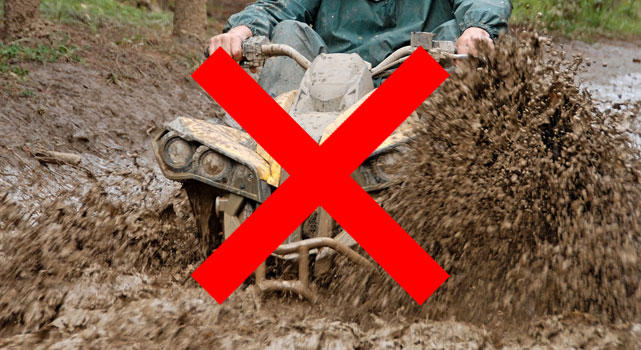
#3: MUD IS ESPECIALLY BAD FOR BRAKE PARTS
Brakes work their best in dry conditions. They can only do so much when exposed to harsh elements that can seriously degrade their functionality. If you’re an off-road enthusiast, it’s highly likely that you’re going to encounter wet fields, lake beds, marshes, and mud holes at some point or another. After all, isn’t that why you bought an ATV? Well, the great irony to that is while the ATV’s chassis and suspension are designed to tackle all sorts of sloppy terrain, the brakes are NOT. Mud contains two of the worst killers of brake components: water and dirt. Dirt acts as an extremely harsh abrasive that promotes increased and accelerated wear to brake pads and rotors. Water can rust and corrode brake parts and, in the worst case scenario, cause thermal cracking if the pad and rotor temperatures are at a high level. Believe it or not, this is also true for brakes that are specifically designed for mudding use. Sintered metal (typically, copper) is the most popular friction material used in heavy duty performance ATV brake pads. The caveat to this is that while the brakes may be intended for use in muddy terrain, they will still suffer the same abuse and depletion--they may only be able to withstand it just a little bit longer than the standard, non-mudding brakes. Also, take into account that on some OEM setups (especially, on older models), the brake rotors and calipers might be too undersized to be subjected to such extreme abuse. If your brakes are collecting dust, debris, and other potentially harmful contaminants, be sure to clean them to prevent further damage. A few sprays of brake cleaner onto your pads and rotors will break up and dissolve caked-on grunge. Rinse will clean cool water and immediately dry to prevent rust formation onto the rotor face (drum brakes will require physical disassembly).
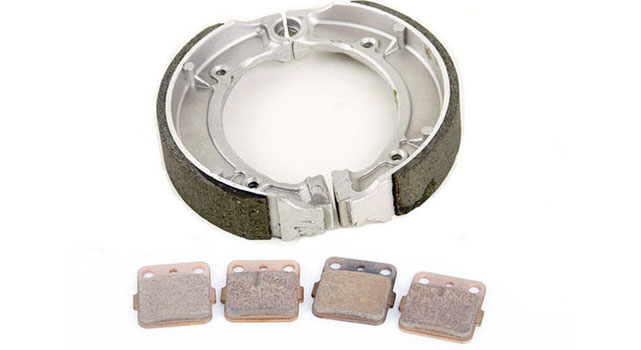
#4: KNOW YOUR BRAKE PAD/SHOE COMPOUNDS
Brake friction material is available in a wide array of compounds, but these compounds fall into three basic categories:
- ORGANIC (aka NAO or Non-Asbestos Organic) material is the generic name for any friction material that uses zero asbestos (once, commonly used as a brake friction material before it was discovered that it was a carcinogen) and zero metallic content. Organic materials are gentle on rotors, are the cheapest to manufacture and replace, but offer the least amount of braking performance and are quick to wear out.
- METALLIC brakes can either be sintered or semi-metallic. Sintered brakes fuse metal particles with binding agents to produce a pad or shoe that can withstand severe high temperatures and extreme environments such as motorsport. Semi-metallic brakes combine core metals and composite alloys in their construction. Both sintered and semi-metallic brakes are desirable choices for racers and performance riders, but both types of materials are known for being noisy and rather harsh on brake rotors. The main difference being that semi-metallics can be easier to live with in everyday use.
- CERAMIC ATV brakes are comprised of dense ceramic substance combined with malleable metal fibers which is then fired in pottery oven, similar to the porcelain or fine china in your display cabinet at home. Ceramic brakes are cleaner than metallics, producing far less of that corrosive brake dust, and are known for their quieter operation and extended life expectancy over organic and metallic brakes. The downside to ceramics is that their development and manufacturing costs can result in considerably higher prices when purchasing replacements. They also do not tolerate cold and hot temperatures as well as their metallic counterparts.
Each has its own optimal temperature range where they operate at maximum efficiency and each type has its own rate of wear on both the material itself and the rotor/drum on which it makes contact. Some compounds are engineered for general use while others can be delegated to perform in a specific environment such as heavy towing or race applications. Keep this in mind when you’re thinking about upgrading from the stock OEM brake material.
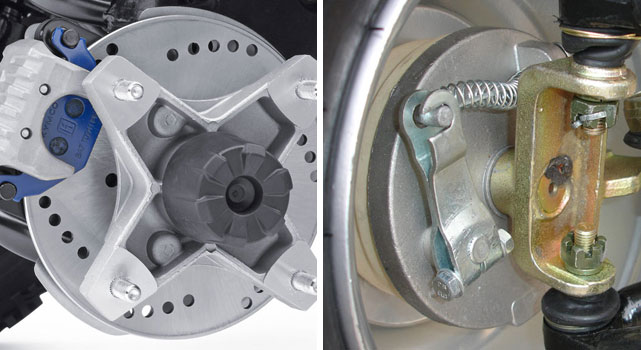
#5: DISCS OR DRUMS?
Most modern ATVs use hydraulic disc brakes on all four corners. The advantages of disc brakes are the same as they are in cars and trucks; disc brakes stop quicker and more effectively. Both discs and drums rely on heat and friction in order to work but disc brakes can better manage the heat since they are exposed to open air and not enclosed like drum brakes. Drum brakes trace their lineage back to the earliest automotive braking systems, just slightly more refined than the old-fashioned handbrake. Drum brakes are perfectly acceptable under most normal riding conditions but their major drawback is their tendency to overheat. Because most of the braking force is done up front, it’s not too uncommon to see some late model ATVs and UTVs that are still equipped with drum brake setups at the rear wheels. Drum brakes operate at a reduced capacity over discs and are not recommended for any type of sport riding or competition. They are, on the other hand, cheaper to manufacture and cheaper to replace (albeit, more difficult to service). Disc brakes are the preferred option for high-performance riding and motorsport as they allow for enhanced control and handling versus drum brakes. If you are so inclined, aftermarket drum-to-disc conversion kits can be had that will allow you to retrofit modern disc brakes on your drum-equipped ATV or UTV. Also, when purchasing disc brake rotors, be sure you understand where and how you ride and pay attention to the different types of brake rotors there are in the market. The majority of ATV brake rotors are a solid single-piece fixed design while others are a 2-piece floating or 2-piece fixed rotor. Rotors can have flat blank faces (no drilled holes) which offer the greatest amount of brake biting surface. They can also be drilled or cut for the purpose of thermoregulation and to reduce unsprung weight. Rotors don’t even have to be perfectly circular, either. Jagged or “wave” cut rotors have serrated edges, similar to a sawblade, that aid in further cooling and weight reduction. Wave rotors also help sling sticky mud away from the brake pads, which helps inhibit the damage sustained during mudding. High-performance rotors for ATVs and UTVs are often drilled and wave-cut.

#6: WATCH YOUR TEMPERATURES
Think of touching a stick of butter onto a frying pan. When the pan is cold, the stick of butter takes a while for it to start melting onto the surface of the metal. If you fire the stove and increase the flame, the butter has an easier time softening up and melting onto the face of the pan. Now, when the flame is at its highest setting, the butter will melt, burn, and vaporize upon contact with the hot metal. This effect is also happening when you apply your brakes. Only instead of a flame source, heat is generated VIA the friction of a spinning brake rotor and the clamping force of the brake caliper. Brake fade is when the brakes experience a temporary reduction or total loss of stopping power. Any vehicle that uses friction to convert kinetic energy (motion) into heat can and will experience brake fade if the temperatures of the friction materials and surfaces have exceeded their intended operating range. Brake functionality will eventually return once the temperatures have fallen into their normal operating range but there are several unpleasant side-effects that can happen with overheating the brakes with fade being only one of them. Obviously, the worst thing that can happen with overheating the brakes is cracking or exploding of the pads and/or rotors but the immediate byproduct is rapid and increased wear of the surface and friction materials. It can also result in pad glazing or lumpy deposits forming onto the brake rotor contact surface. Glazing is when the pads get so overheated, the friction actually smooths out the material and reduces the abrasiveness required for proper friction. The pad becomes slick and cannot properly grab onto the rotor once the caliper is compressed. Brake pad deposits form when excessively hot brake pads and rotors are allowed to make contact for extended periods of time while the wheels are stationary. This will manifest itself as shudder or jittery vibrations being felt through the chassis whenever the brakes are applied. Over on the hydraulic side of things, as the brake temperatures climb, heat is transferred through the calipers and/or wheel cylinders and the brake fluid itself starts to boil and deteriorate. Boiling brake fluid will vaporize it, creating a phenomenon known as brake fluid vapor lock. The vapor has nowhere to vent (thus, it is locked in place) and is far more compressible than the liquid brake fluid. This will result in spongy-feeling or a complete loss of brake function. If this happens, it’s important to flush and change out the contaminated brake fluid as well as bleed the system of any air bubbles that can interfere with the hydraulics. Brake fluid comes in a myriad of temperature ratings that, much like disc brake pads and rotors, are intended for either general or specific dedicated use such as motocross or ATV racing. Take a moment to think about your riding habits and type of usage when choosing ATV brake fluid. Aggressive riding causes extra wear and tear to all of your ATV’s mechanicals and the brakes often take the brunt of the abuse.
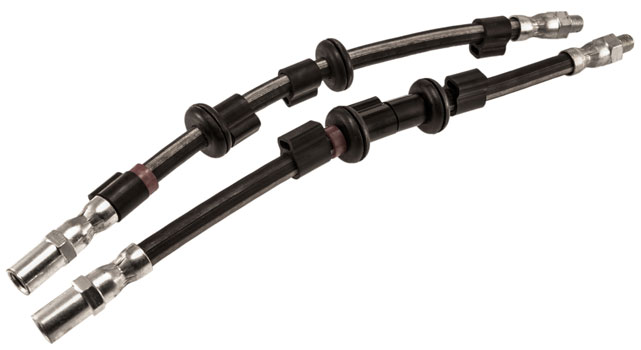
#7: INSPECT/REPLACE THE BRAKE HOSES
Brand new ATVs typically leave the factory wearing inexpensive rubber brake hoses. Rubber hoses are effective, durable and most importantly, cheap. Ergo, they are consumable items not unlike the other ‘disposable’ components such as pads, brake rotors, drums, and brake shoes that will gradually deplete over time and through usage. Riders often forget that brake hoses don’t last forever and these must be routinely inspected for rips, tears, shrinkage/bulging, dry rot, and the wear and tear that comes with normal use. ATV brake hoses have an average lifespan of 1 year. If you notice brake mushiness despite changing out your fluid (and performing the necessary bleed procedure), pads/shoes, and rotors/drums, bad brake hoses are usually the culprit. Replace your brake hoses on a regular yearly basis or, if you want an easy and cost-effective way to improve the braking performance in any ATV old or new, purchase a set of replacement steel-braided brake lines.
These 7 essential pointers may provide the answer if you notice that you’re tearing through brake parts at an abnormally fast rate. Because we all don’t ride the same make/model ATV, nor do we share the same riding habits or travel through the same terrains and environments, your individual mileage may vary. Nonetheless, Race Driven’s specialty off-road brake pads, brake shoes, and rotors for ATVs and UTVs are designed and engineered by enthusiasts for enthusiasts. Race Driven’s lifetime passion for powersports and our experience on and off the track allows us to develop the best products at the lowest prices possible.


